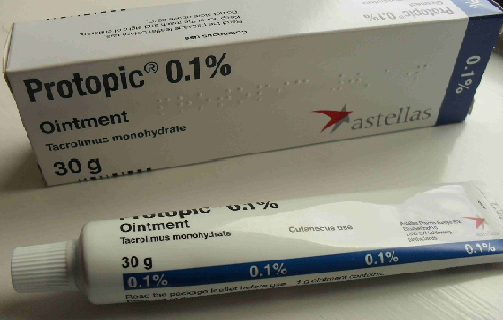Protopic ointment use for vitiligo is fairly common in patients as it has shown significant effectivity in treating the disease. Vitiligo is an idiopathic disorder whose major symptom is the appearance of depigmented macules resulting from the destruction of melanocytes, or at least damaged melanocytes. This affects approximately 1-4% of the general population.
Tacrolimus, a protopic ointment which is known as a macrolide immunosuppressant, actually comes from the microorganism Streptomyces tsukubaensis. It contains paraffin, mineral oils, white wax, and petrolatum and has been approved by the FDA for prophylaxis of rejection in liver and kidney transplant patients. It is used for the transplantation of organs like the kidneys, eye cornea, heart, liver, and lungs. Although there is a difference in the structures of tacrolimus and cyclosporine, they both have the ability to inhibit the activation of T-lymphocytes. This ointment does not cause the telangiectasia, atrophy, or severe ocular effects that are often observed in topical corticosteroid use.
How does protopic vitiligo work?
Topical tacrolimus has been approved by the Food and Drug Administration for its use in the management of atopic dermatitis. Children aged 2-15 are prescribed the 0.03% concentration while those 16 and above may use the 0.1% formulation. Aside from atopic dermatitis and vitiligo, topical tacrolimus has also been used for immunologically based skin disorders like alopecia areata, pyoderma gangrenosum, and psoriasis.
Who are prohibited from using this drug?
Protopic is becoming more popular these days for vitiligo treatment, replacing steroid ointments. Children below 2 should not use this drug, as well as the following people:
- Those who have a frail immune system should not use this protopic because this drug is an immunosuppressant;
- Those who have been using protopic for more than 6 months should stop using it and should seek other forms of treatment;
- People who have some other skin infection should not use protopic;
- It should not be used by women who are breastfeeding.
Protopic drugs will not cause any thinning of the skin, which is characteristic of steroid cream use. This is one of the more distinct advantages of protopic vitiligo. The important thing is that it must not be used for a long time, and constant breaks between uses must be observed. The use of protopic drugs should only be upon the doctor’s recommendation as it has several side effects and contraindications.
Protopic vitiligo was found to be most effective when combined with other therapies such as microphototherapy, narrow-band UVB, narrow-band excimer laser, and helium-neon laser.
Protopic side effects
If you start with this treatment, you will experience a burning sensation followed by itchiness on the skin. However, there is nothing to worry about as these sensations are not so severe.
Other than these, protopic vitiligo may also cause elevated sensitivity to heat or cold, pain in the muscles, headaches, and infection in the hair follicles and skin. Due to these side effects, extra care must be taken when this type of medication is applied on the face, especially around the eye area.
Who Can Use Protopic Ointment For Vitiligo? How Does It Work?,





















